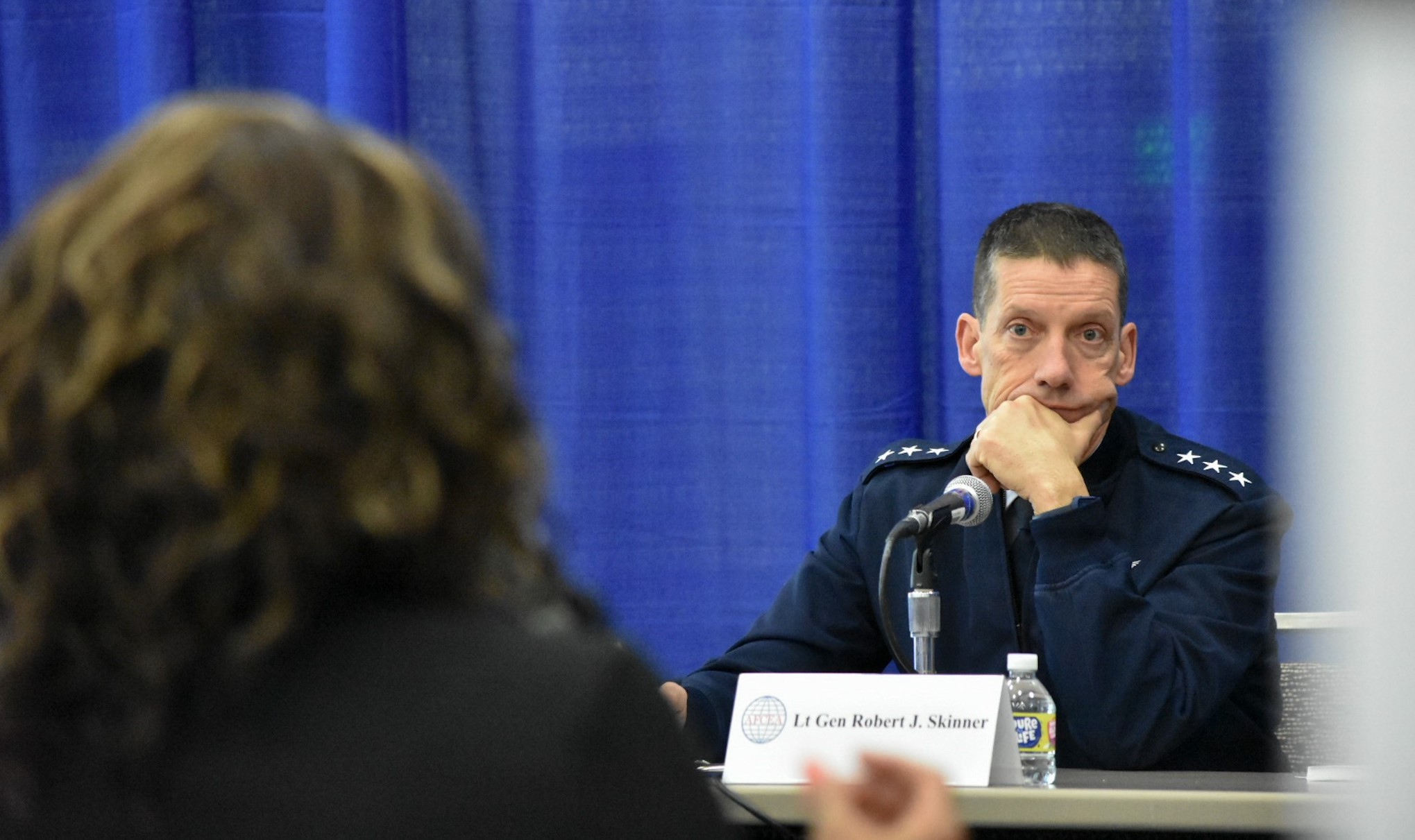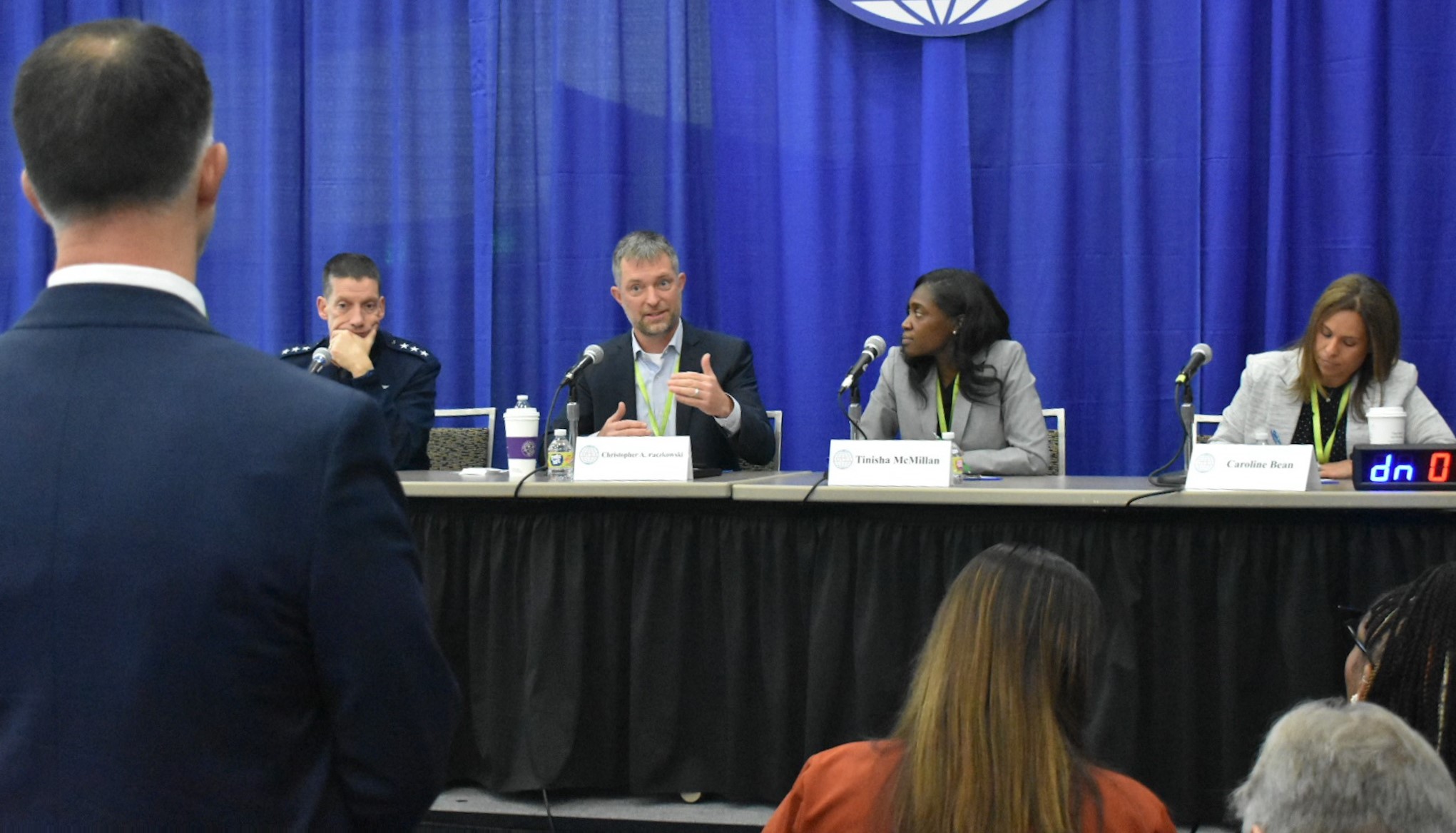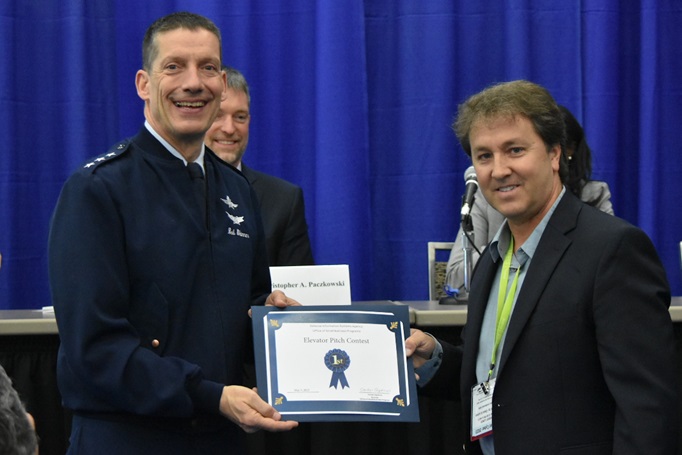How 90 seconds could change your life
Office of Strategic Communication and Public Affairs
May 9, 2023

(DISA photo by David Marin)
Imagine this, you're at a conference in a hotel where you’re staying on the 35th floor. You've been trying the whole time to meet this one program manager so you can talk about your company’s capabilities. You leave your room to get on the elevator, and who's on the other side of the doors but the program manager you have been trying to reach. The doors close and you realize you have just 35 floors to tell that person everything you need to get a follow-on meeting scheduled – that’s about 90 seconds.
That’s how Brenda Leonard, the U.S. Defense Information Systems Agency’s Office of Small Business Programs associate director, began the DISA Small Business Elevator Pitch competition at AFCEA TechNet Cyber 2023 in Baltimore, May 3.
The competition began with representatives in a standing-room only crowd looking to be chosen as one of the few small business spokespersons to perform their elevator pitch to a panel of four senior DISA representatives; including Air Force Lt. Gen. Robert J. Skinner, Defense Information Systems Agency director and Joint Force Headquarters-Department of Defense Information Network commander; all while in front of a group much larger than any elevator could hold.
No pressure.

(DISA photo by David Marin)
The purpose of the competition, aside from the opportunity to perform the pitch, was for the panel to provide immediate feedback to the participants and give everyone in attendance real-life examples of how to communicate a message effectively. The winning prize was a 30-minute, one-on-one meeting with Skinner.
To start the competition, Leonard began by stating the goal of an elevator pitch is to get a follow-up meeting.
“That’s what you want from your pitch,” said Leonard. “Because of that your pitch has to be concise.”
Audience members received a card with the criteria for a good elevator pitch to draft their own, which the panel also used for scoring.

Leonard then asked the audience to consider what needs to be included in a pitch.
“What's the first thing you're going to do?” questioned Leonard. “Introduce yourself and give them your name.”
In a normal conversation you introduce yourself with your name and the name of your company.
“Not only do you want to give them the name of your company once in your 90 seconds,” said Leonard. “You really want to give them the name of your company three times … the reason for that is even if they don't remember what your name is … they'll remember the name of your company.”.
As an example, she mentioned stating the name of your company as you introduce yourself, using the company name again with an example of what the company has already accomplished, and once again toward the end in regard to what your company can do for DISA.
It's important to provide past performance examples when talking about the company’s skills, so that you’re not focused on theoretical explanations of what you can do, but rather demonstrate what you’ve already done, verifying skill and ability.
“… You're trying to show … where your strengths lie because you've already [been successful],” said Leonard. “So, you're going to cover your core competencies by … saying what your company is good at.”
When you're talking about what your company is good at, or what it excels at, you don't need to use the words “we're great at” this or “we excel at” that.
“You want to have your experience lead you to show how you are great at doing something specific,” added Leonard. “… Use a real example of a contract … or service that you've already done, even in the commercial world.”
Is there a problem that you can solve for the agency? Is there a product or service that the agency really needs?
“Is it something about safety and security for our warfighters?” questioned Leonard. “[Say] something that's going to stick with the recipient so they know you know DISA … what our needs are and that you can help the agency.”
The last bit of advice before giving the audience the ground rules and 15 minutes to work on their pitch and submit their names was to be memorable, excited and confident.
“If you don't believe in your own product, or service, why would we believe in it?" asked Leonard.”.
Finally, always end with a request for a follow-up meeting.
There was enough time during the competition for Leonard to pick seven representatives to step up to the mic and deliver their pitch.

(DISA photo by David Marin)
After each pitch, the panel took time to score each performance and provide feedback, including the additional tips of making eye contact, know your product and the agency’s mission so you don’t have to look at notes, make sure you speak loud enough and reduce the use of acronyms.
Once tallied, the top three performers received certificates from Skinner. Cynthia Bowman-Rooths placed third for her passionate explanation of her company and research on DISA. Chris Durham received second place for his confident presentation and strong closing statement. Bradley Rainbolt won first place, for having a clear beginning to his pitch stating his company’s purpose, why it matters to our organization and detailing their capability can be an aid to the mission in the spectrum environment, turning his 90-second pitch into a 30-minute one-on-one with DISA’s director.


Air Force Lt. Gen Robert J. Skinner, DISA director and JFHQ-DODIN commander, presents (from top to bottom and left to right) Bradley Rainbolt, Chris Durham and Cynthia Bowman-Rooths, first, second and third place certificates, respectively, for their presentations during the DISA Small Business Pitch competition during AFCEA TechNet Cyber in Baltimore, May 3, 2023. (DISA photos by David Marin)
Being prepared to perform a concise 90-second elevator pitch at any moment means you know your product, and the mission well for when the moment arises.
It may not always be an in-person pitch. A less stressful way to request a meeting with a program manager, a leader or the director is by submitting a Meeting Request Form. There too, clarity and brevity go a long way.
Whether it’s in an elevator, on the floor during a conference, submitting a meeting request, or at a pitch competition, knowing and preparing with these tips will provide you a better chance of getting your point across and scoring that in-depth, follow-up meeting.
Learn how to partner with us. Visit our Industry Partners page on DISA.mil for more information.